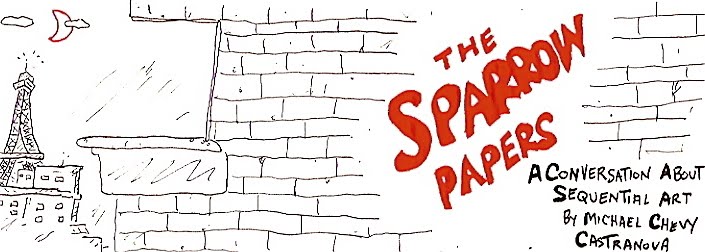 In one panel, Secret Agent X-9 holds a gun in his left hand, aiming out it of frame. In the very next panel, the gun is now in his steely right hand and his left hand is extended, like a tightrope walker, to balance the picture.
In one panel, Secret Agent X-9 holds a gun in his left hand, aiming out it of frame. In the very next panel, the gun is now in his steely right hand and his left hand is extended, like a tightrope walker, to balance the picture.As with many sequences in this great 1934 newspaper comic strip, this makes no sense visually. But that’s OK because it all looks great.
Every panel, in fact, of the dapper X-9, the sultry Grace Powers, the feckless Evelyn or even the evil master criminal the Top looks as if plucked from an old posed, black-and-white movie poster. Even when X-9 leaps through a window, he looks pretty darned elegant.
No surprise as the art is by Alex Raymond, the painterly genius behind Flash Gordon and Rip Kirby. And the slam-bam, non-stop action plot? By Dashiell Hammett, creator of The Thin Man and The Continental Op. Speaking of dashing and elegant.
I was delighted to find this and a wealth of other incredibly cool stories in The Mammoth Book of Best Crime Comics, edited by Paul Gravett.
I tend to avoid collections, figuring that for the few dynamic storylines or splendid images the book will be over-packed with contrivances and weak drawing.
So imagine my surprise to find in this one book not only Hammett and Raymond’s tremendous Secret Agent X-9, but also work by one of my favorite cartoonist storytellers, Jacques Tardi, illustrating a story by his wife, Dominique Grange.
If that weren’t enough, this fat, 2008 book also features noir-ish work by Joe Simon and Jack Kirby, Alan Moore, Charles Burns (starring his cigarette-smoking, overweight wrestler-detective El Borbah), Neil Gaiman, Jodi Bernet, Mickey Spillane (remember paperback detective Mike Hammer?), Alex Toth, Ed McBain, Max Allen Collins and Terry Beatty’s Ms. Tree, and Bernie Krigstein, before his EC Comics’s art.
And on top of that, Will Eisner’s The Spirit makes an appearance.
Mix in with this impressive bunch a good number of cartoonists and writers I’d not seen before but wished I had.
A “mammoth” book it is.









